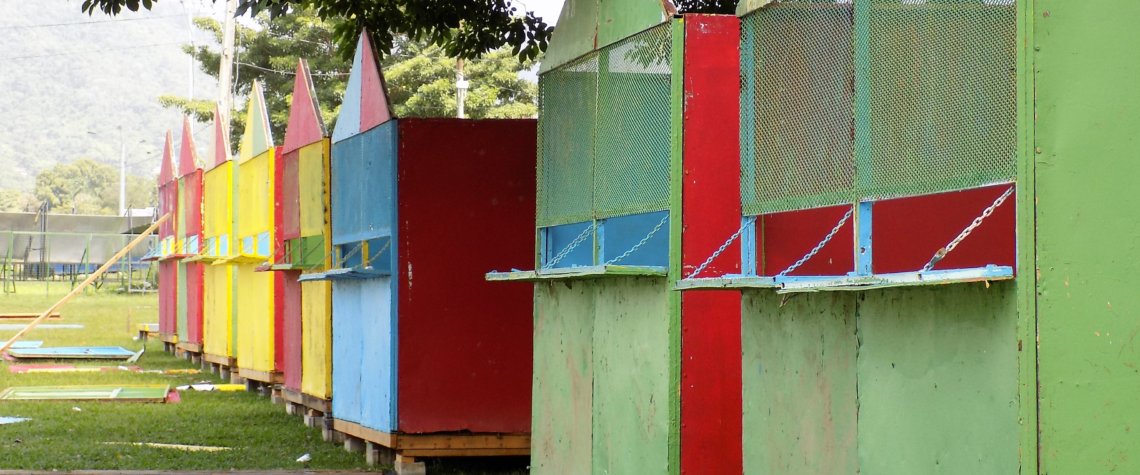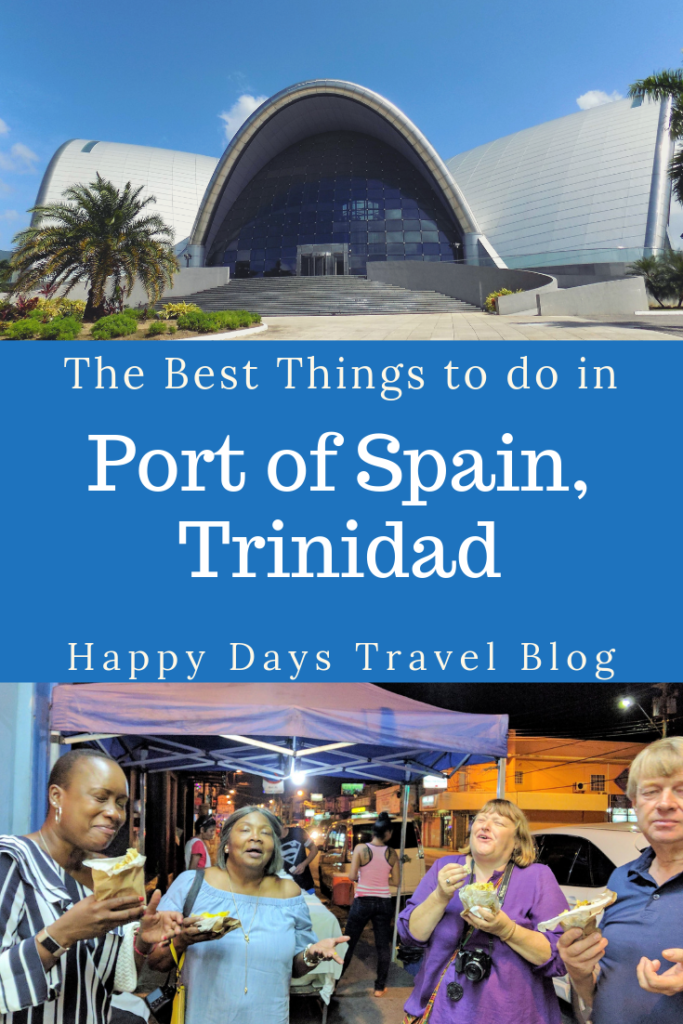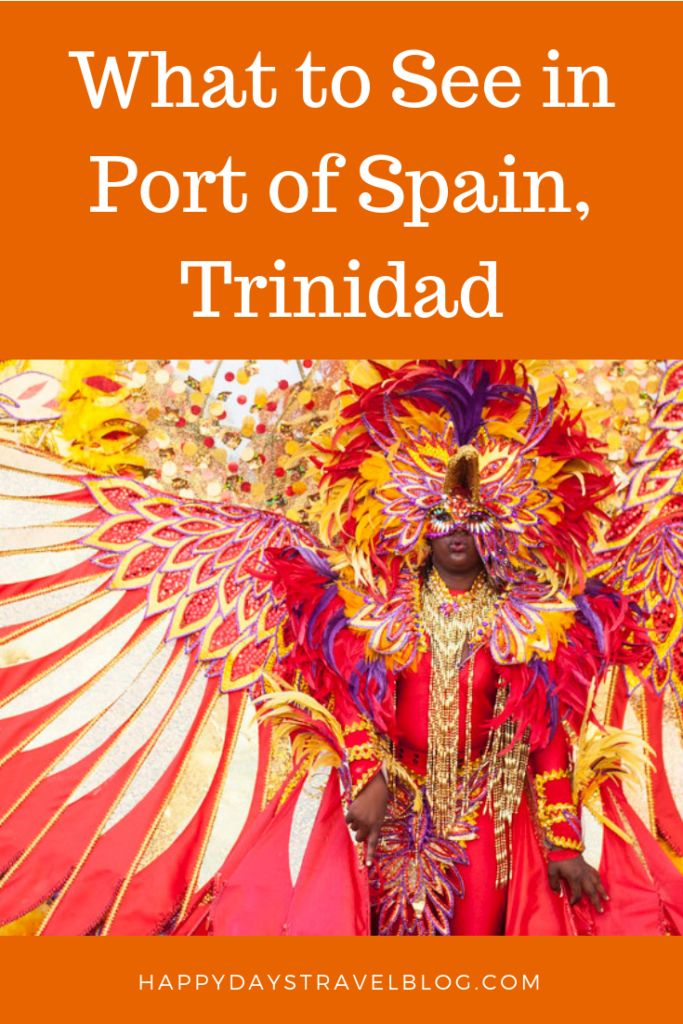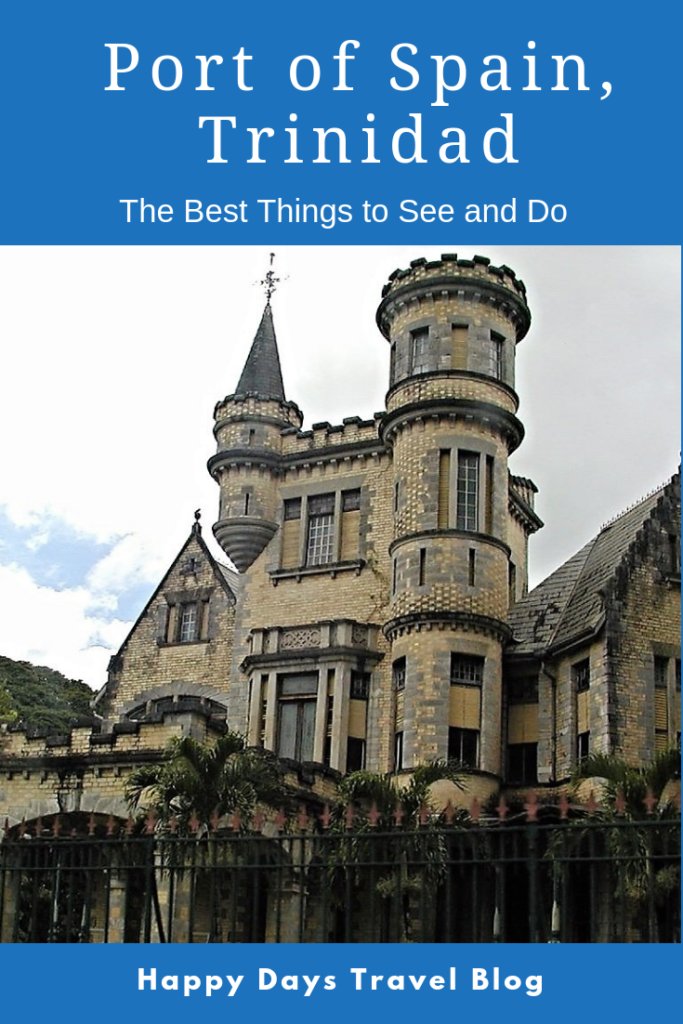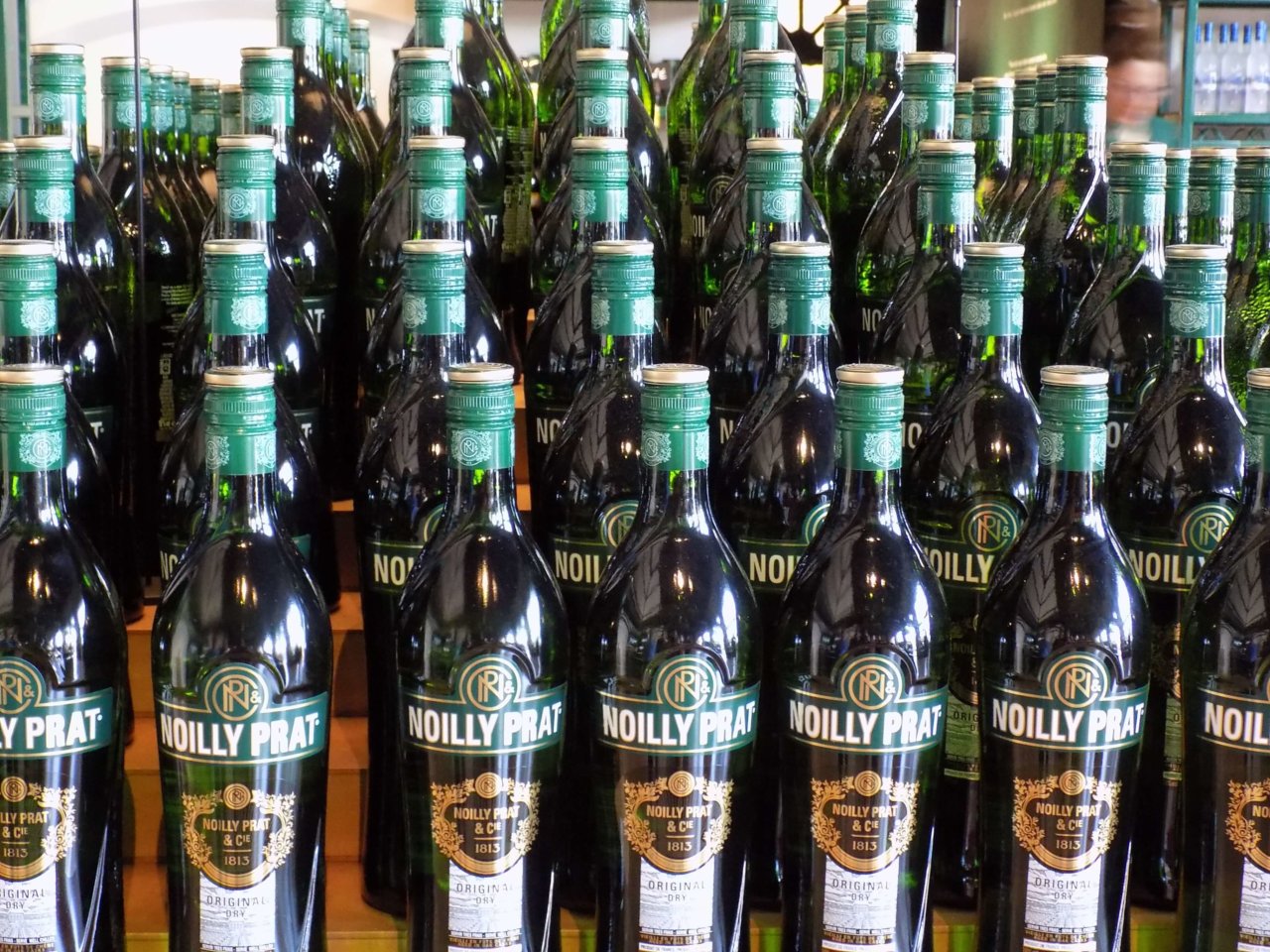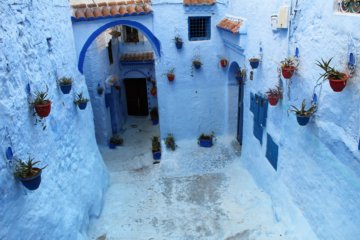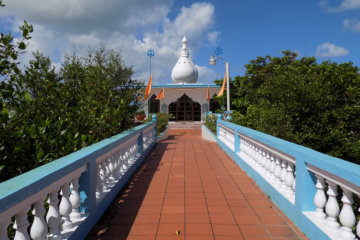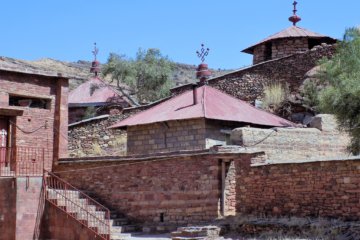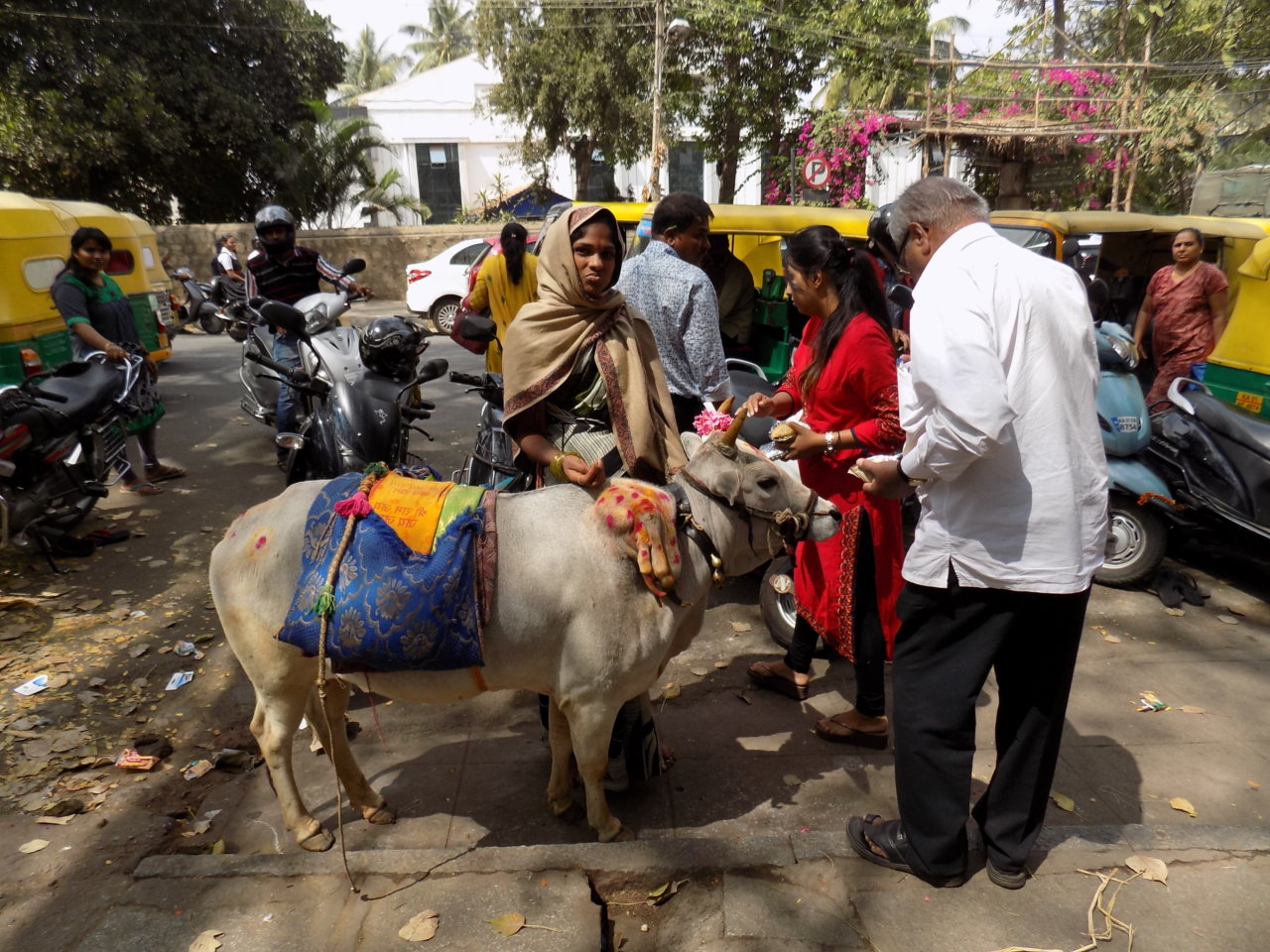We visited Port of Spain on the last day of our two-week stay in Trinidad. Going on our Airbnb’s host’s advice that there really wasn’t very much to see, we only allowed ourselves a couple of hours to explore the city. Parking the car next to Queen’s Park Savannah and walking into the old part of Port of Spain, we soon realised that this was a mistake. There was clearly loads to see and we didn’t have enough time to see it! Before long, we were planning a return visit. So, this post reflects what we found when we spent a further few days in the city.
In this article
A Bit About Port of Spain
Port of Spain is the capital of the twin-island nation of Trinidad and Tobago. It occupies an important place in the hearts of the people, more so perhaps for Trinis than Tobagans. (Click here to read my article about how different the two islands are!)
The city is the centre of the republic’s booming economy, the home of government and the media, and the epicentre of Trinidad’s rich cultural life. Port of Spain is where Carnival was first established in Trinidad, and where steel pan was invented.
Despite its obvious attractions, Port of Spain is often overlooked as a tourist destination. Visitors are often put off by the city’s reputation as a crime hotspot. In addition, first impressions are of an ugly conurbation with traffic-choked streets and dusty commercial buildings. There are, apparently, few reasons to linger. I, however, want to describe the best things to do in Port of Spain and persuade you that it’s worth a couple of days out of any Caribbean itinerary.
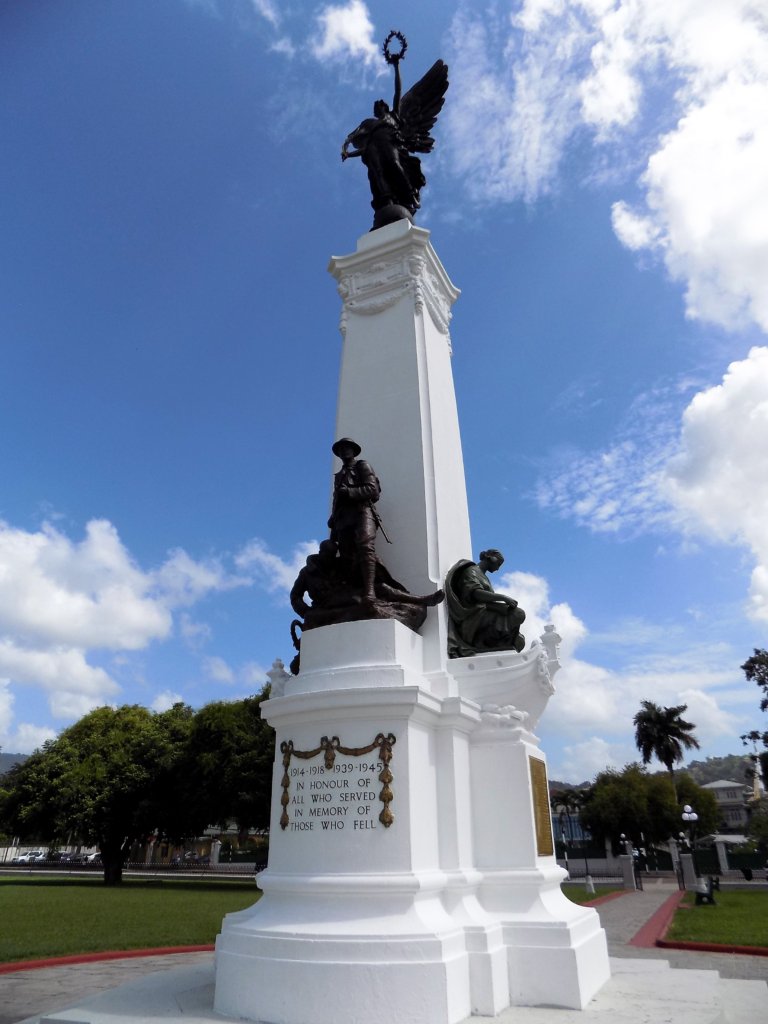
Best Things to do in Port of Spain, Trinidad
Walk Around Queen’s Park Savannah
Queen’s Park Savannah is a large open space which separates downtown Port of Spain from the more upmarket parts of the city. It was created by forward-thinking town planners in the early 1800s and now gives Port of Spain some much-needed breathing space.
Despite the traffic that constantly moves around the perimeter of the park, inside the space is surprisingly calm and restful. Lovely old trees give welcome respite from the fierce heat of the sun. Families bring picnics. Children run around. Joggers take to the paths. Groups of friends play impromptu games of cricket. It is a lovely spot to while away an hour or two.
No permanent structures are allowed in Queen’s Park Savannah, but that doesn’t include the vast array of stalls and carts which set up shop on the boundaries as the sun goes down. Here you can buy all manner of street food including corn soup, barbecued chicken, and oysters dipped in fiery pepper sauce. In the windy season (March and April), you can also buy hand-made kites known as Mad Bulls. Hundreds of these colourful creations flying over the savannah make for a great photo opportunity!
At Carnival time, Queen’s Park Savannah is transformed with grandstands and stages which form the centrepiece of the celebrations.
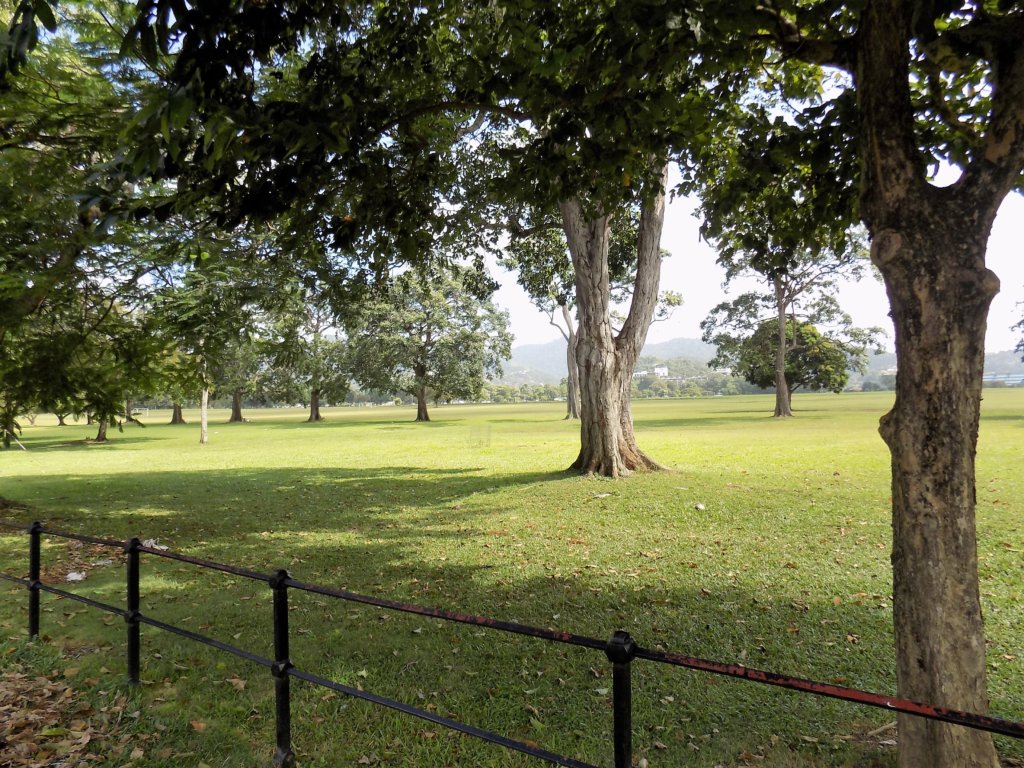
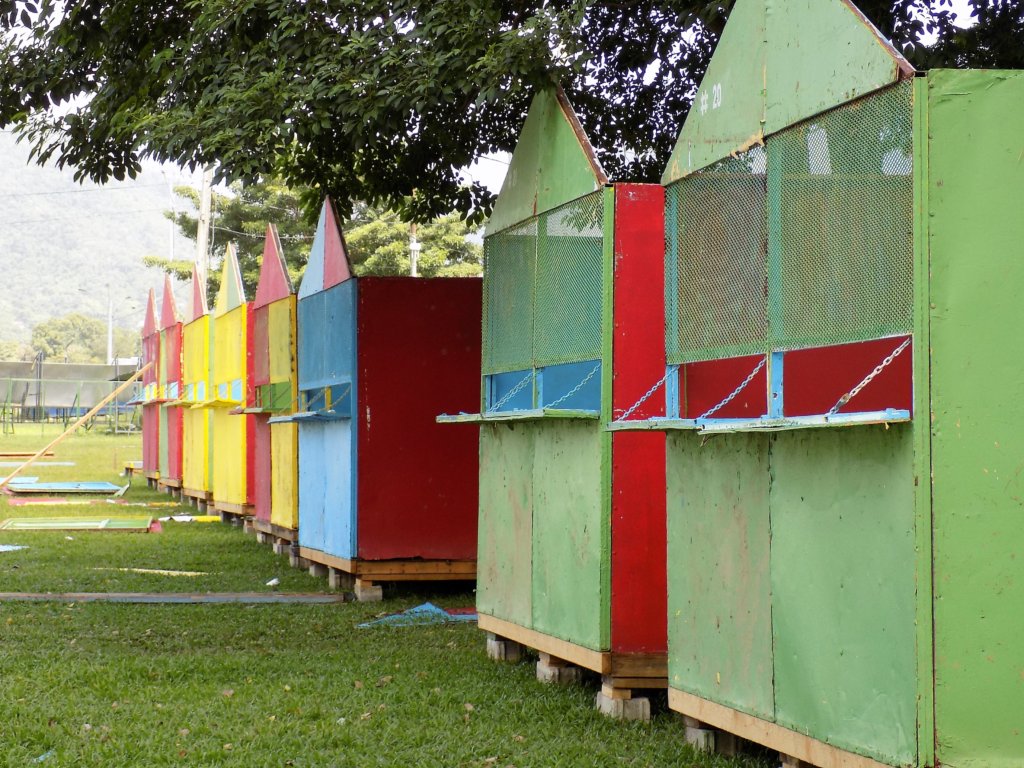
The Magnificent Seven
Along one side of the savannah is a row of mansions built by rival plantation owners in the early years of the twentieth century. Each man tried to outdo his neighbours in the grandeur of his design. The resulting buildings, ‘The Magnificent Seven’, have had a chequered history. Three are still in use today (one as a college, one as church offices, and one as a private residence). The others have fallen into a state of disrepair although some are in the process of being restored. None are open to the public.
The buildings are best viewed from within the savannah itself. From here, you can stand back and appreciate the quirky architecture and the ornate decoration.
The most outlandish of the seven is Killarney, a fairy-tale castle complete with turrets and spires, built for a German plantation owner named Stollmeyer by the Scottish architect Robert Giles, who modelled it on Queen Victoria’s residence at Balmoral. Architectural historian John Newel Lewis captured the absurdity of the place when he wrote:
‘A German built a bit of an untypical Scottish castle in Trinidad and called it by an Irish name. He must have been by that time a Trinidadian because only Trinidadians do these things.’
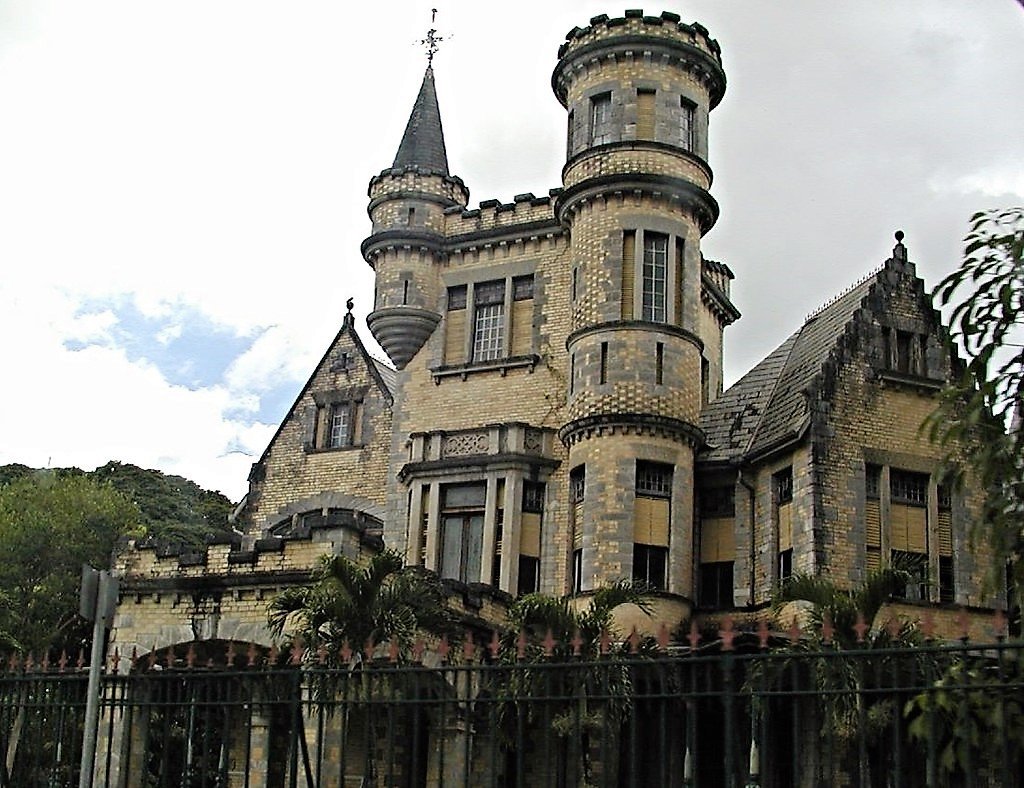
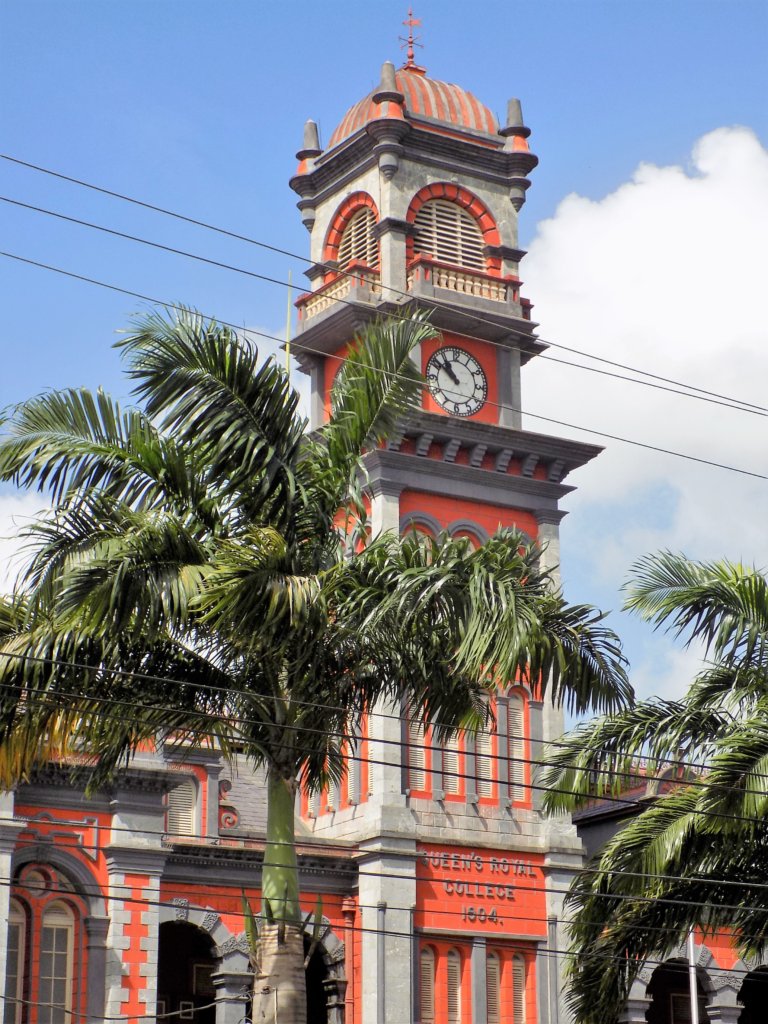
Visit the Botanical Gardens
It was teeming with rain when we visited the Botanical Gardens in Port of Spain, but it really didn’t detract from our enjoyment too much. This lush haven is well worth an hour or two of your time.
The gardens were established in 1818 by Governor Woodford and the botanist David Lockhart. The collection of more than 700 trees found here is one of the oldest in the western hemisphere and provides welcome shade from the heat of the sun (as well as shelter from the rain!). There are well laid out paths to help you explore the gardens. Don’t miss the interesting cemetery where you can see the crumbling gravestones of many of Trinidad’s governors.
Lime in Independence Square
Liming (socialising and relaxing with friends whilst sharing food and drink) is Trinidad’s national pastime. Independence Square (formerly known as Marine Square because the land was reclaimed from the sea in 1816) and its central section known as Brian Lara Promenade, after the island’s most famous cricketer, is Port of Spain’s most popular after-work liming spot. Friends gather around the benches and concrete chess tables and buy food from the many street vendors who congregate there.
The square is also home to what is, purportedly, the most profitable KFC in the world – Trinis do like their fried chicken!
Take a Nighttime Food Tour
Tasting the wide variety of Trinidadian street food is a highlight of any trip to the island. Whilst you could just randomly select food vendors by yourself, it is much better to book a tour and get a local experience. We booked an evening food tour through Viator and felt that it was money well spent. In fact, it was a highlight of our entire trip. Even though we had already been in Trinidad and Tobago for four months when we did the food tour, we still learned so much.
Anthony, our personable and knowledgeable guide, picked us up from our hotel on time. We then went to another hotel in the city to pick up the only other two guests on the trip, a mother and daughter from the US whose roots were firmly in Trinidad. Together we drove to our first stop for corn soup. On the way, Anthony regaled us with stories about the island, its history, culture and food. His passion for his subject was contagious!
The tour is structured in such a way that the drives in between food stops allow you to digest what you’ve already eaten and anticipate what is to come. After the soup, we enjoyed geera pork sandwiches, doubles, beef roti and a palate-cleansing, refreshing soursop ice-cream to finish. It was three hours of great company, interesting conversation, good food, and a lot of laughs – highly recommended!
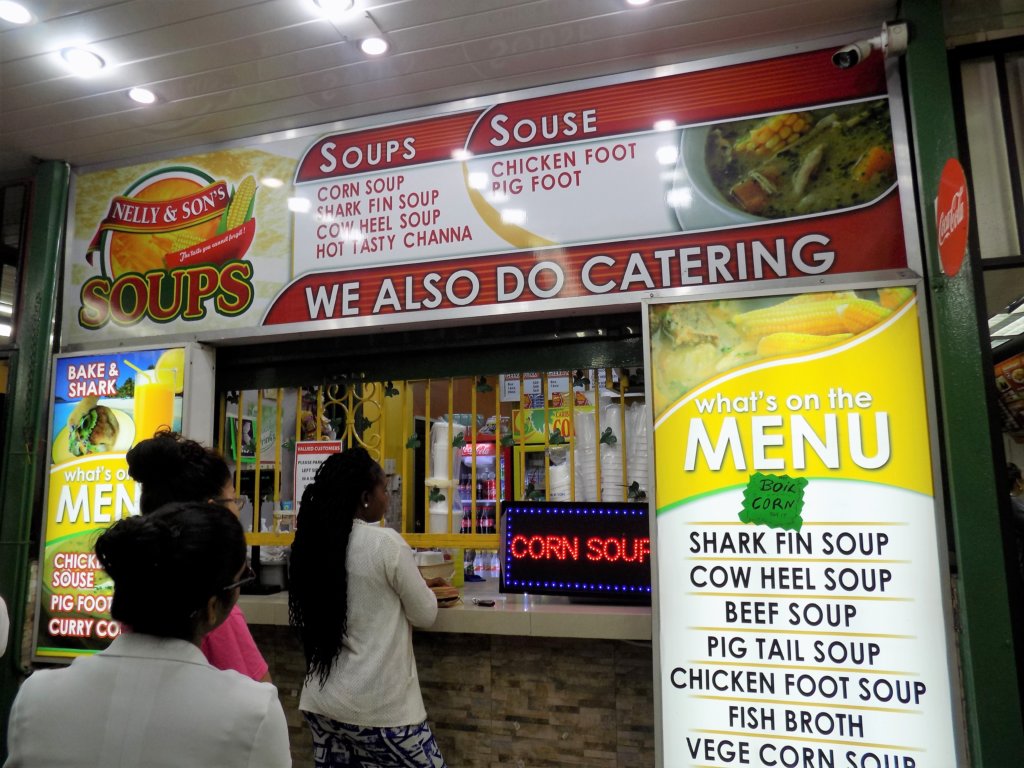
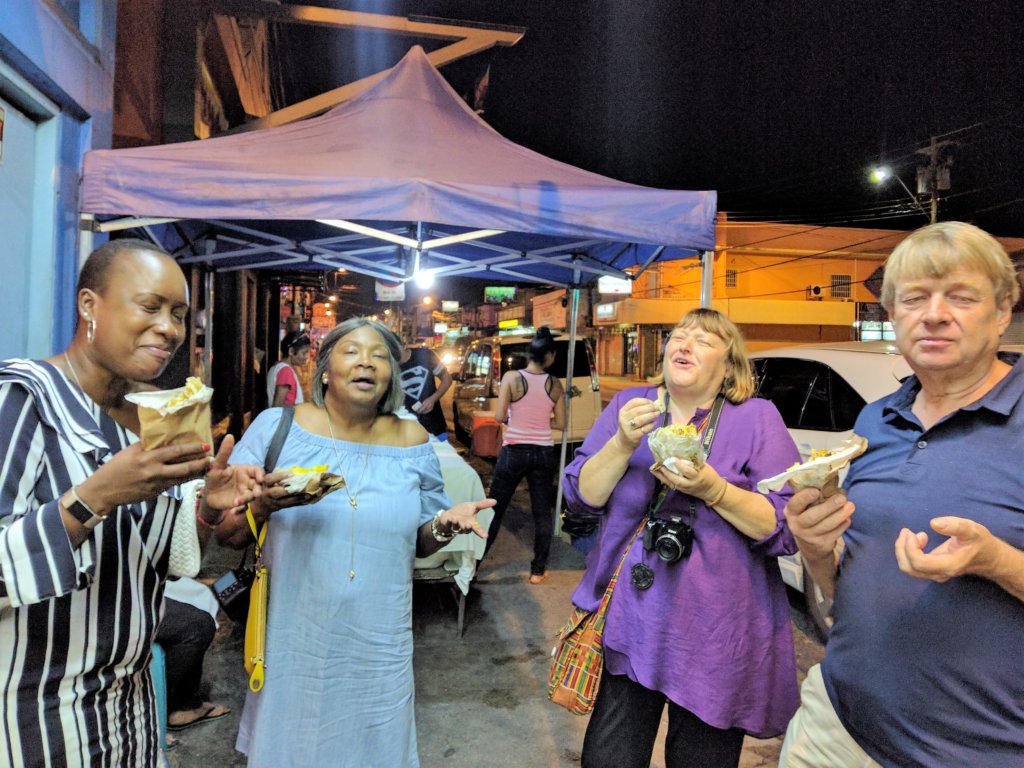
Visit the National Museum and Art Gallery
Housed in a gabled building constructed in the 1890s as part of the celebrations for Queen Victoria’s Diamond Jubilee, the National Museum and Art Gallery has an extensive collection, covering everything from early Amerindian history to the technology of the modern-day oil industry. Although much of the labelling is outdated and there are no interactive exhibits you would expect to see in a modern museum, it is still worth a visit. You will get an essential overview of Trinidad and Tobago’s history and culture.
Admire the NAPA Building
The futuristic National Academy for Performing Arts (NAPA) building with its arcs of steel and glass looks somewhat out of place amongst the colonial buildings that surround it near Queen’s Park Savannah. I say ‘admire’ it because you can’t go in! It was closed down by health and safety inspectors in 2014 as parts of the building were deemed to be dangerous.
It was a controversial project from its inception. It was commissioned by Patrick Manning’s PNM government and built at a cost of TT$500 million. When it opened in 2009, it was criticised as a white elephant due to its shoddy construction and its unsuitability as a performance space. It had numerous fundamental design flaws, not least a backstage loading area so small that not even a steel drum could fit through! This, coupled with an analogue (rather than digital) sound and light system meant that the building wasn’t fit for purpose. To top it all, no maintenance programme was put in place and, within a few short years, faults were found with crumbling stage supports, tiles falling off the exterior and sinking foundations. Hence, the NAPA building was closed! Who knows if it will ever reopen? For now, it’s just an interesting addition to Port of Spain’s skyline!
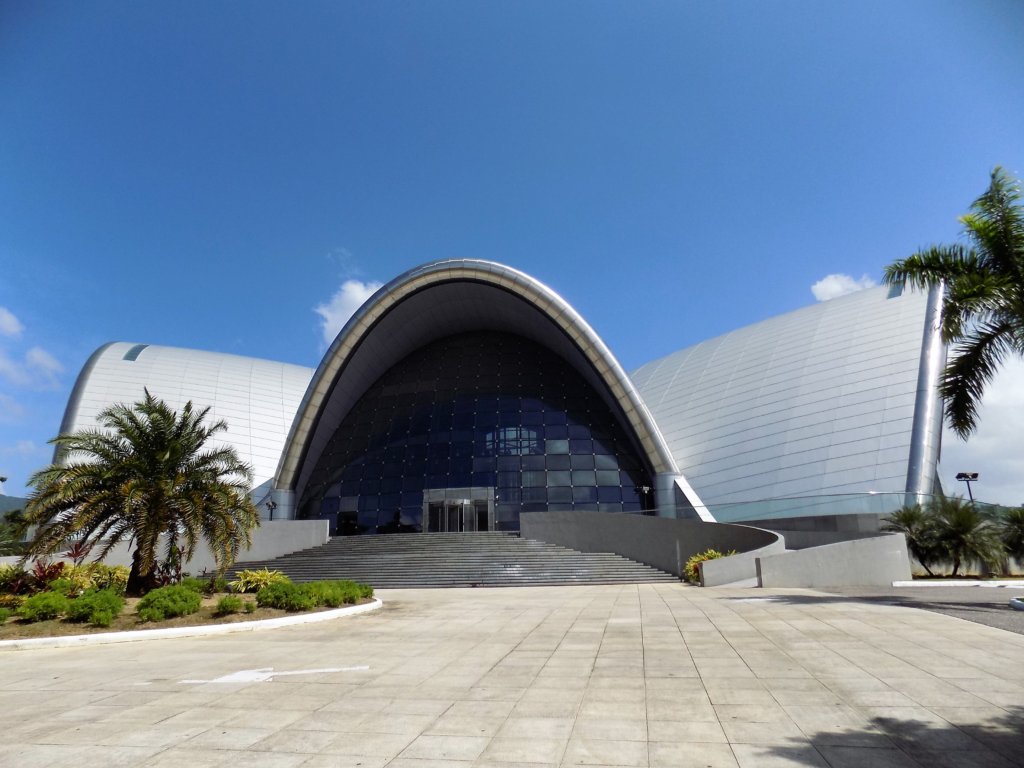
Book a Tour of the Angostura Distillery
Whether or not you’re a fan of Trinidad’s famous bitters, a tour of the Angostura distillery is well worth doing. You need to book in advance by calling or e-mailing the distillery directly. They only run tours if they have 10 people or more, so it’s best to contact them as early as possible so that they can put you together with others who want to visit. You will learn all about the fascinating history of Angostura Bitters and you’ll get to taste some delicious rums.
Read my complete article about the tour by clicking here.
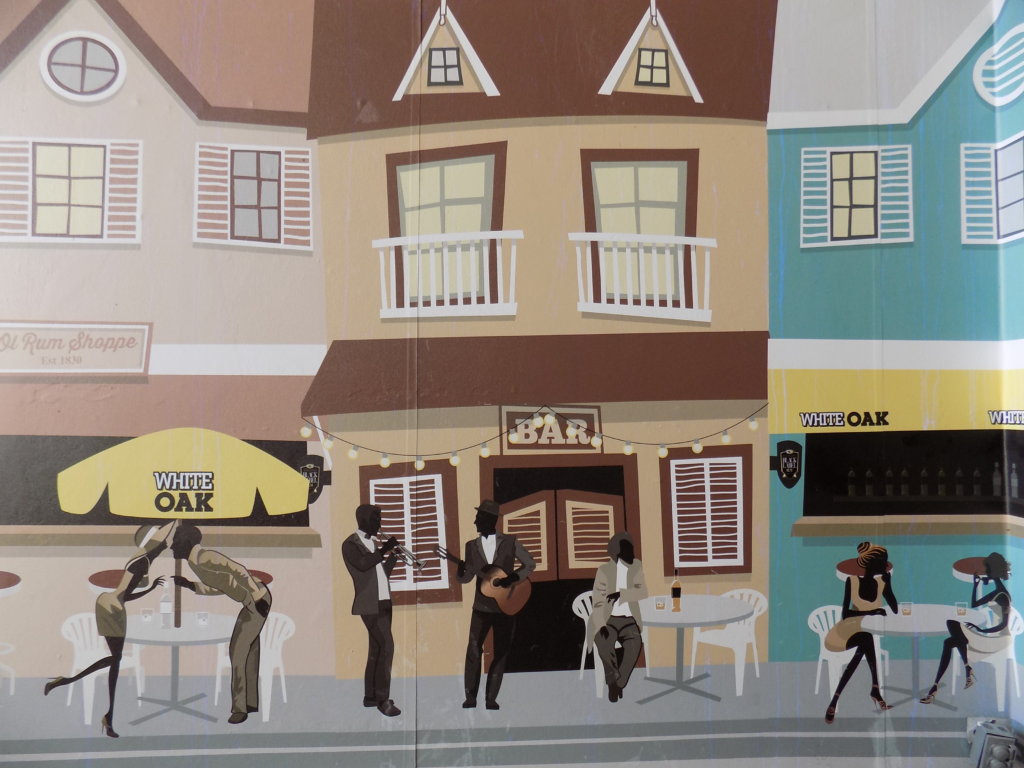
Go Shopping
Port of Spain has a wide range of retail outlets to satisfy the most ardent shoppers. There are several new American-style luxury malls as well as the more traditional shops. Charlotte Street, off Independence Square, is worth a visit. It is lined with fabric shops, general stores and colourful street stalls selling everything from fruit and vegetables to clothes, shoes and imported tacky souvenirs. It’s a vibrant place to wander through.
Allow yourself to be tempted by the delicious aromas coming from the roti shops. For a few dollars, you’ll eat like a king! All of your senses will be assaulted. Reggae and soca music can be heard all around, competing with the car horns as drivers become frustrated trying to negotiate the narrow gap between the stalls. It’s the best place to pick up a bargain in Port of Spain and a great spot to shop for spices to take home.
Visit Some of the City’s Churches
Port of Spain has a plethora of interesting churches, both Roman Catholic and Anglican.
Cathedral of the Immaculate Conception
The imposing twin-towered Gothic Roman Catholic Cathedral of the Immaculate Conception is located at the eastern end of Independence Square. It took sixteen years to build and was completed in 1836. Its ironwork frame was shipped from England and the limestone wall blocks were quarried locally in the suburb of Laventille. Sixteen stained-glass windows depicting Trinidad and Tobago’s many ethnic groups were added during a restoration project in the 1980s. They add colour and light to an otherwise drab interior.
Holy Trinity Cathedral
Located on the south side of Woodford Square, the Anglican Holy Trinity Cathedral was completed in 1818. It is an elegant stone structure built along Gothic lines, with an impressive clock tower. The cool interior boasts a mahogany hammer-beam roof which was made in England and modelled on London’s Westminster Hall. Governor Woodford, the first British governor of Trinidad, is buried here. There are lovely gardens to the side of the cathedral which contain an unusual stonework maze.
Rosary Roman Catholic Church
The dignified Gothic Revival Rosary Roman Catholic Church is the most impressive of Port of Spain’s three main churches. It was built between 1892 and 1910. Unfortunately, it is now surrounded by buildings on all sides and is somewhat difficult to find. If you do, though, you will be surprised by its spacious calm interior and its stained glass windows with highly detailed biblical scenes which are surely the most beautiful in the city.
Greyfriars Church
Built in 1837, the angular white-painted Greyfriars Church is the oldest Presbyterian place of worship in Trinidad. The building has long since ceased being a place of worship and has fallen into disrepair. There is a campaign by conservationists, though, who would like to see the church restored.
Do Carnival
If you’re lucky enough to be in Port of Spain during carnival time, you’re in for a treat!! The main carnival parades take place on the Monday and Tuesday before the start of Lent, but the build-up happens for several weeks before with competitions to find the best calypso, soca, and steel pan bands. The culmination of all of the celebrations is the Carnival Tuesday Parade of the Bands with the full display of elaborate costumes that people have been working on for months. It surely is a sight to behold!!
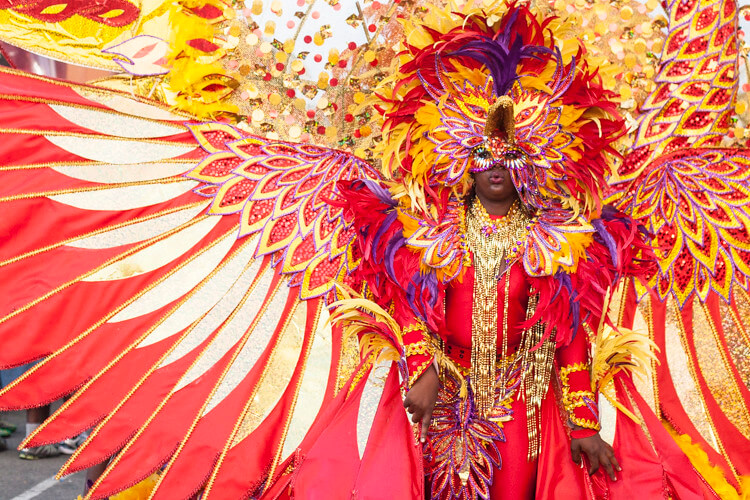
Join a Tour of Port of Spain
Whilst it’s perfectly possible to explore Port of Spain independently, why not join a tour and let someone else sort out the logistics? It’s a great idea, especially if time is limited. Whenever we visit a new destination, we book a tour with a local guide. There’s no better way to get under the skin of a place! We use Viator when we want to uncover interesting things to do in a new city. They’re easy to use and book with, and we’ve had some amazing experiences with them.
Search here for accommodation in Port of Spain
If you like what you’ve read, PIN IT!!
If you’re travelling soon, please use these links!
Are you travelling soon? Use these links when making your bookings. These are the companies we use. It won’t cost you any extra, but we will earn a few pennies to help keep Happy Days Travel Blog going. Thank you!!
- Book your travel insurance with World Nomads (Never leave home without protecting yourself, your trip and your belongings!)
- Book your flight with Skyscanner
- Book your accommodation with Booking.com
- Book a tour with Tour Radar or Intrepid Travel
- Book city tours and activities with Get Your Guide
Disclosure: This post contains affiliate links. If you click through for more information, or to make a purchase, it may result in a small commission coming my way. Please note that there is no extra cost to you associated with this. Thank you so much for supporting my site.
Join our mailing list

Sign up to receive our monthly newsletter. Keep up with what we're doing and be the first to receive special offers and insider tips.

